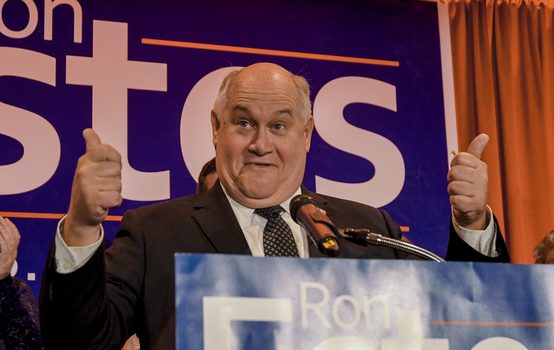Does a Close Race in Kansas Bode Poorly for the GOP?

On Tuesday night, the voters of south-central Kansas elected Republican candidate Ron Estes to Congress by an uncomfortably small margin of seven points. The Democratic candidate, James Thompson, was leading among early voters, but that didn’t prove to be enough.
Generally speaking, individual congressional races are not important enough to merit much attention from the national press. But this one, coming on the heels of Trump’s victory in November, is supposed to be a dark portent for Republicans going into the 2018 midterm elections.
The GOP was worried enough to fly Ted Cruz into Wichita to stump for Estes, and President Trump himself recorded a robocall on his behalf, saying “there’s really few much more important” congressional elections than this one.
Vox wondered how Republicans in vulnerable districts might be thinking about the loss, asking, “Are any of them going to look at last night’s election, where a historically rock-solid Republican district turned into a single-digit race, and decide supporting the AHCA is the right move for their political survival?”
It would be a mistake to try to draw many conclusions from Tuesday’s results. First of all, Estes, whose last job was as state treasurer, was even more than any of his primary challengers tied to the extremely unpopular Kansas Gov. Sam Brownback. Thompson repeatedly trumpeted the governor’s endorsement of Estes on social media and his campaign website, referring to Estes as a “Brownback yes-man.”
The election was at least as much a referendum on Brownback as one on Trump. It seems rather unlikely that a district that went for Trump by 27 points in November soured on him that much in five months. Far more likely is that Estes was a weak candidate, closely tied to an extremely unpopular governor.
Some left-leaning Kansans in the blue enclave of Lawrence expressed frustration to me that the Democratic Congressional Campaign Committee failed to commit any resources to Thompson, arguing that support from the national party could have put him over the top. One even suggested there were sour grapes thanks to Thompson’s endorsement of Bernie Sanders.
The DCCC did put in 25,000 phone calls on Monday, but also argued that pouring money into the race would have backfired against him in the strongly Republican-leaning district. They’re probably right about that.
To vastly overgeneralize, elections are won and lost in populous suburbs. Barring a return of the Populist Party, rural voters are right-leaning, urban ones are left-leaning, and suburban areas are in the middle. Thompson carried a majority in only one county of the district, Sedgwick, where Wichita is located along with about three-quarters of the district’s population, which he won by slightly fewer than 2,000 votes. This precinct map of the county seems to show that the suburbs were not turning blue in any significant way. Suburban Wichitans are more consistently conservative than suburban Northern Virginians or Philadelphians.
Better tests will come, among them the much-discussed race for Rep. Tom Price’s seat in Georgia. Kansasitself may furnish a better example of a Democratic resurgence in the east: the Third District, comprising the Kansas side of Kansas City and the more moderate suburbs of Johnson and Wyandotte Counties. Rep. Kevin Yoder could well be in for trouble in 2018 if Trump’s agenda continues to stall.
For now, if you hope to find auguries of a Democratic congressional wave in the entrails of this special election, you would be better off waiting for a more representative chicken.
J. Arthur Bloom writes from Lawrence, Kan.
Comments